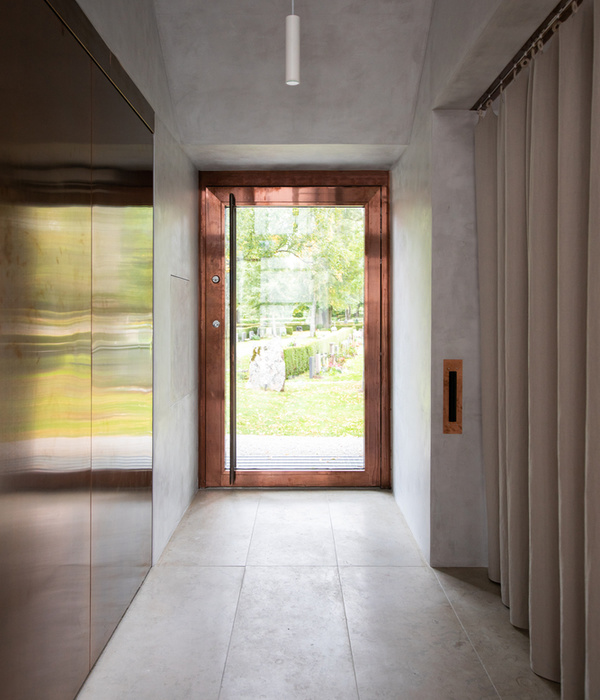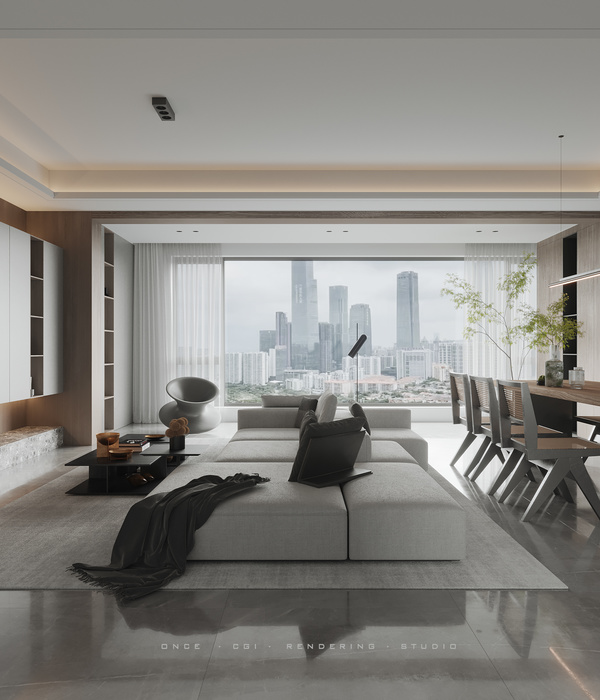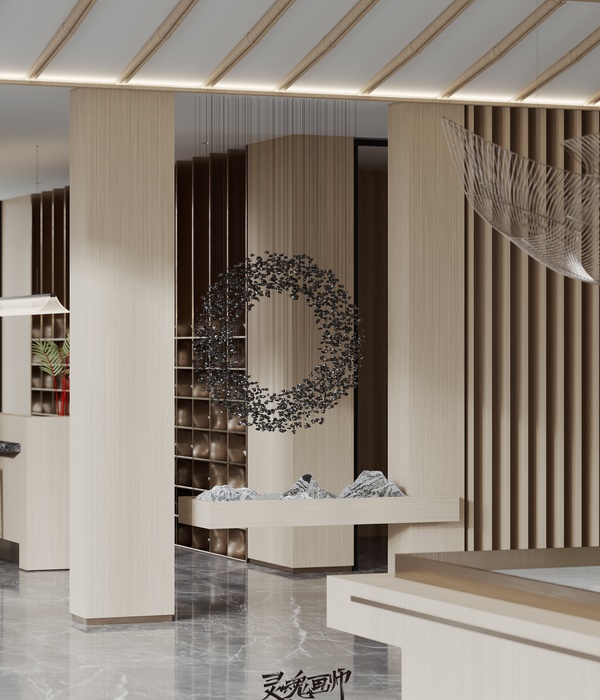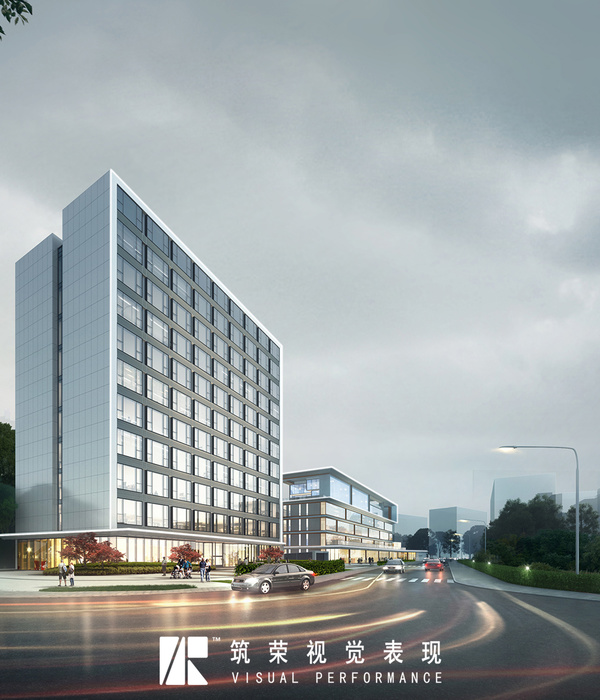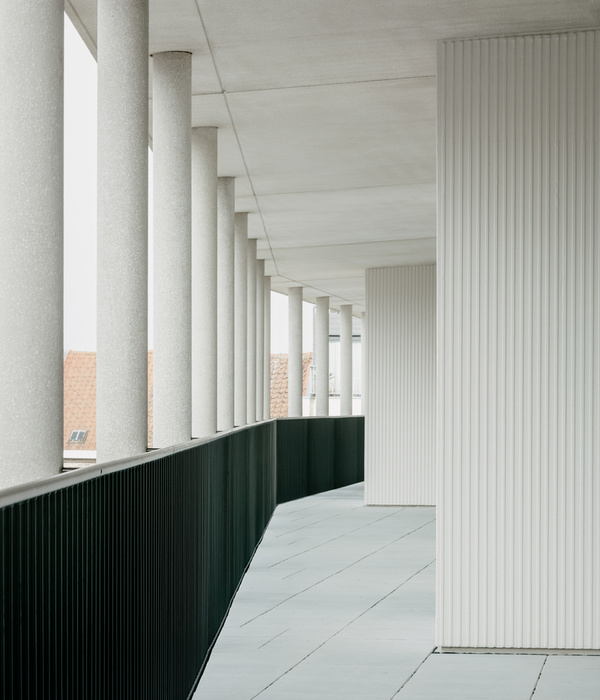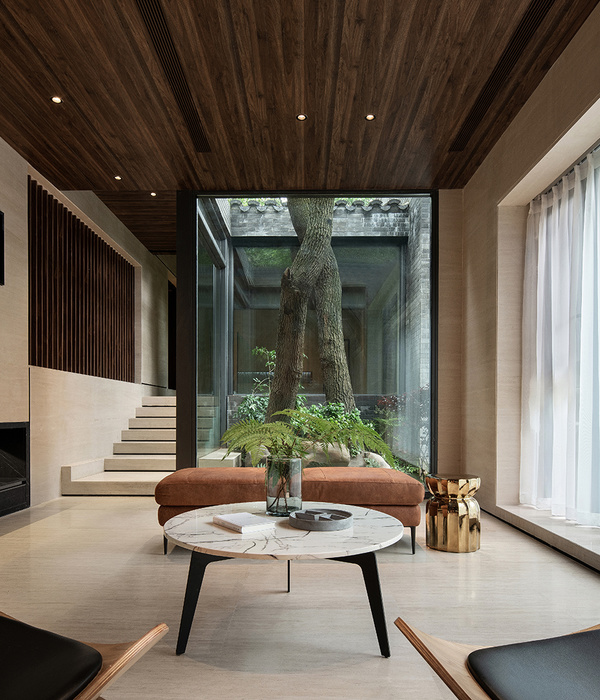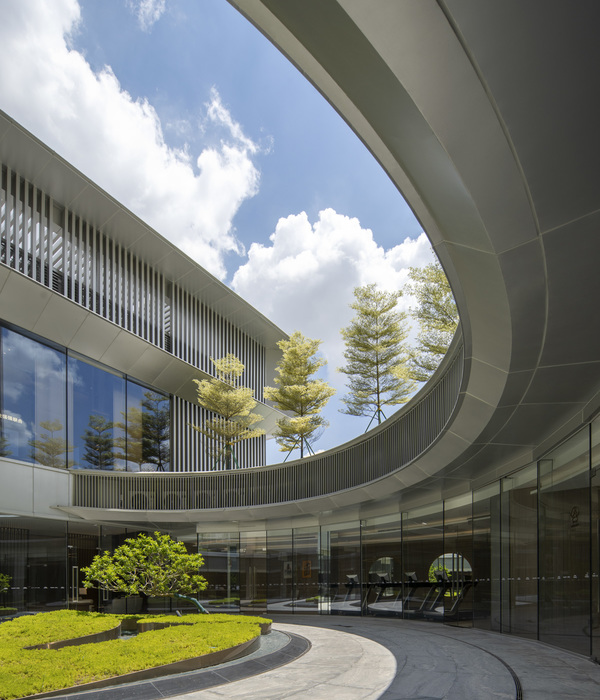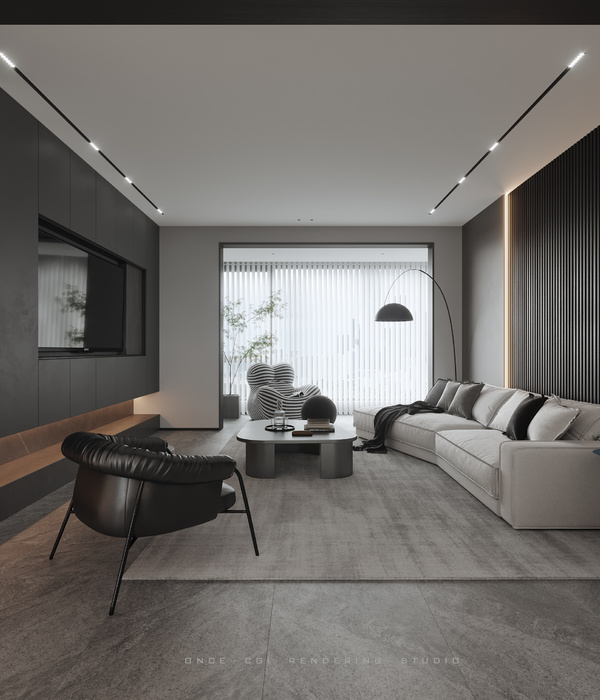娘子关最早为唐太宗李世民胞姐平阳公主所住之地,关城则是筑建于明代时期,娘子关有万里长城第九关之称,为历代兵家必争之地。当地经济以旅游发展为主,镇内现有原始村落建筑依然保留历史元素。因此要求游客服务中心设计,必须与自然山体风貌、历史元素、文化传承相结合。
▼项目概览,overview ©中国中建设计研究院
Niangziguan was known as the ninth pass of the Great Wall of China and was a must-see for military strategists in the past. The local economy is dominated by tourism development, and the existing original village buildings in the town still retain historical elements. Therefore, the design of the tourist service center must be combined with the natural features, historical elements, and cultural heritage.
▼鸟瞰图,aerial view ©中国中建设计研究院
主入口以实墙面为主,强调建筑的力量感与自然山体相呼应。
Which the main entrance is covered by the solid wall, building power and natural mountain was be in stronger spoken.
▼主入口视图,main entrance view ©中国中建设计研究院
场地西北侧与东南侧高差近2米,利用场地原有地势。建筑采用化整为零方式,通过水榭庭院将各功能单元有机组合连系。游客在行进路线体验上,穿越回旋游廊,感受建筑与山水互融的力量。
There is a height difference of two meters on both sides of the field, using the original topography of the site. The building adopts the method of break up the whole into parts, through the waterside courtyard, all functional units are organically combined and connected. In the experience of the traveling route, tourists travel through the roundabout and feel the power of architecture and the integration of mountains and rivers.
▼庭院入口,entrance of the interior courtyard ©中国中建设计研究院
▼内庭院,interior courtyard ©中国中建设计研究院
▼从游廊看内庭院,view of the interior courtyard from the veranda ©中国中建设计研究院
▼游廊,veranda ©中国中建设计研究院
▼游廊内的视角,view from the veranda ©中国中建设计研究院
▼穿过庭院景观看游廊,view of the veranda through the landscapes ©中国中建设计研究院
▼游廊光影,light and shadow of the veranda ©中国中建设计研究院
室内空间设计真实还原建筑本身原貌,质朴的元素贯穿室内外空间,将当地人文环境表现的淋漓尽致。
The interior space truly restores the original appearance of this building, with plain elements running through the interior and exterior spaces, fully expressing the local humanistic environment.
▼室内空间,interior space ©中国中建设计研究院
▼总平面图,general layout ©中国中建设计研究院
▼首层平面图,first floor plan ©中国中建设计研究院
▼立面图,elevations ©中国中建设计研究院
▼剖面图,section ©中国中建设计研究院
▼项目更多图片
{{item.text_origin}}

